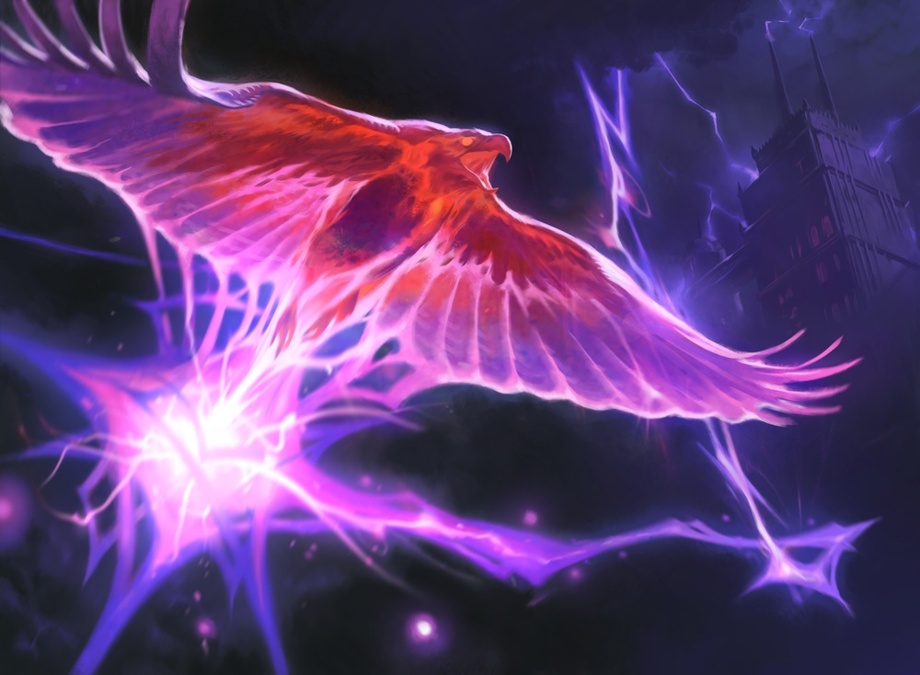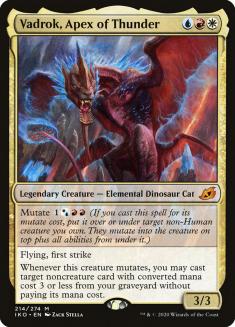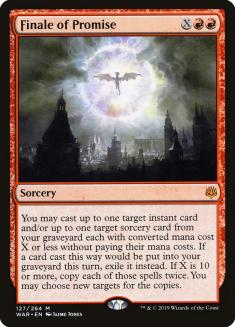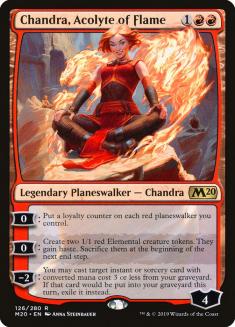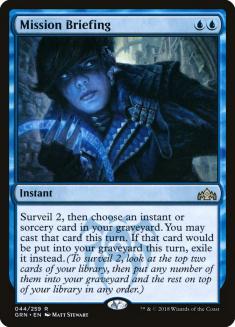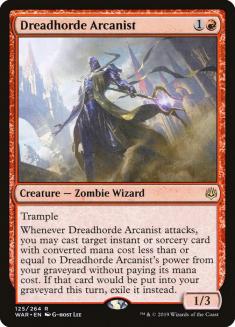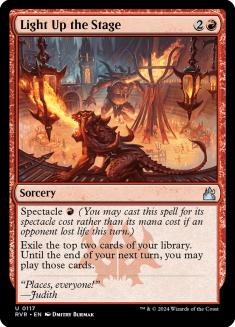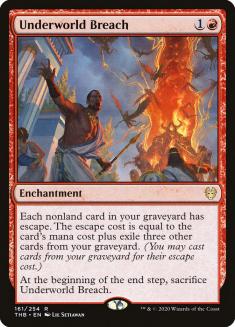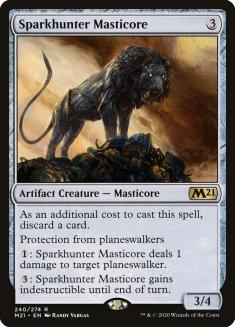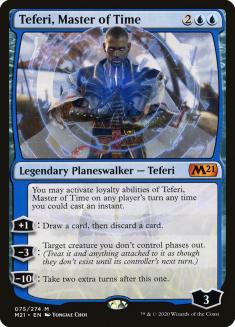CEDitor’s Note: See the Truth is what we believe the name of this new card draw spell to be. We will update this article accordingly with the official name once that information is revealed.
It’s no secret that I’m fond of Izzet “spells matter”-type decks. On top of that, Arclight Phoenix is nearing the end of its time in Standard, and its best shot for one last hurrah is when the format is at its largest, bringing with it a critical mass of cheap spells to enable the powerful thunder chicken.
Wizards of the Coast (WotC) is getting my hopes up with yesterday’s preview of See the Truth, a cantrip with the upside of becoming a two-mana Ancestral Recall. It’s been several years since the days of Treasure Cruise, but I’m sure many of you remember just how powerful that card was when properly enabled, since it’s not legal in Modern or Legacy anymore.
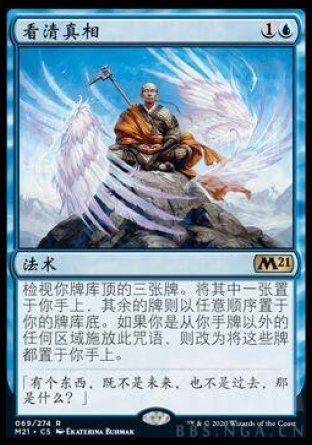
See the Truth — 1U
Sorcery
Look at the top three cards of your library. Put one of them into your hand and the rest on the bottom of your library in any order. If you cast this spell from anywhere but your hand, instead put all three cards into your hand.
With that kind of upside, See the Truth is automatically worth looking into. But if you’re going to properly evaluate a card, as well as set yourself up with the best framework to maximize its strengths, we have to look at the worst case scenario of it as well. In this case, that downside is quite clear:
Anticipate Is Not a Good Magic Card
Anticipate certainly reads like a good Magic card. It feels like a Ponder where you don’t need a shuffle effect to ensure that you can clear away any bad cards, but when it comes to cantrips, low cost is everything. Since cantrips don’t affect the battlefield, spending too much mana on one puts you behind on development, and you don’t have a resource advantage to show for it.
This tradeoff is much easier to justify at one mana, when you won’t fall as far behind and the gains in consistency will generate an advantage over time, since your opponents will stumble more often than you will. Cantripping at one mana is valuable enough that Crash Through sees Modern play and cards like Thought Scour would be scary to add to Pioneer. On the other hand, the list of quality two-mana cantrips is rather short and only includes cards that provide other incidental value. Think Strategic Planning in a graveyard strategy, Chart a Course with Arclight Phoenix, and Omen of the Sea with Yorion, Sky Nomad.
See the Truth is more than capable of making it into that second group, since it has the potential to be much more than a sorcery-speed Anticipate. But youll have to do something to work for it, and make sure you get paid off fairly often, because the base card here isn’t worthwhile.
So, starting with Standard, here’s an incomplete list of cards I wouldn’t be upset playing that can potentially power up See the Truth:
Of these seven, the one that most excites me is Finale of Promise. It’s already powerful enough by itself and fits better into a deck that is going to cast an Anticipate fairly often. Chandra, Acolyte of Flame and Light Up the Stage are at their best in more straightforward aggressive strategies, while the others are a step down in power level for Standard. The others can potentially make their way in as role-players, but Finale is the best payoff of the bunch.
Fortunately, Finale of Promise also plays nicely with Arclight Phoenix, which provides a shell that mitigates the downside of a two-mana cantrip most effectively. The power of Arclight Phoenix is in its ability to allow cantrips to generate something on the battlefield, so there’s no tempo loss and sometimes a significant tempo gain.
Moreover, the discard outlets that are meant to enable Arclight Phoenix can also help you bypass the Anticipate mode on See the Truth. Though not as powerful, it’s akin to the interaction between self-mill cards like Satyr Wayfinder and Uro, Titan of Nature’s Wrath. We know what See the Truth is trying to do, so we might as well get to that point as quickly as possible.
Lastly, See the Truth actually helps out Finale of Promise quite a bit, since the card has been hurting for another quality sorcery since Chart a Course rotated out of Standard. You need to have a good mix of instants and sorceries to consistently get the most out of Finale of Promise and most of your best spells are instants. At a certain point it’s not worth filling your deck with bad cards to make Finale work, so adding a sorcery that’s also a great target for Finale is more significant than it appears at first glance.
With all that in mind, here’s my first pass for Izzet Phoenix in Standard. Add four copies of See the Truth to the following:
Creatures (14)
- 3 Goblin Electromancer
- 4 Arclight Phoenix
- 1 Vadrok, Apex of Thunder
- 4 Sprite Dragon
- 2 Sparkhunter Masticore
Planeswalkers (1)
Lands (21)
Spells (20)
Sideboard

Most of the deck should be no surprise. With all the good two-mana cantrips, I think Goblin Electromancer is a necessity. It really supercharges the deck so that it operates at a power level well above what is okay for Standard, and there isn’t a ton of spot removal floating around in Standard right now. Sprite Dragon is a great addition that also plays nicely with Finale of Promise, giving the deck another great aggressive threat that can pressure Temur Reclamation or any deck looking to utilize Ugin, the Spirit Dragon.
The more controversial inclusion in the threat base is Sparkhunter Masticore, a card that I don’t think is getting enough attention. In decks that can mitigate the additional cost, it’s a decently sized body that puts in work against the many powerful planeswalkers in Standard right now. In particular, Izzet Phoenix has struggled against Narset, Parter of Veils and Finale of Promise is shut down by Teferi, Time Raveler. I also love the idea of having a discard outlet to set up Arclight Phoenix that also impacts the battlefield so you don’t fall behind against aggressive decks. You won’t want to draw a lot of copies, but the first has a lot of value by filling in many of the gaps in Izzet Phoenix that players have previously exploited.
The last addition from Core Set 2021 is probably the most-hyped card from the set thus far, Teferi, Master of Time. The looting ability obviously pairs nicely with this deck, but at four mana it’s well above the deck’s normal curve. I’m including a single copy for now but I could easily see that slot be better taken by The Royal Scions or the fourth Radical Idea if the list proves a little spell-light.
Both those swaps would maintain the number of discard outlets as well. That said, Teferi’s ability to answer big creatures with its -3 ability and tear through your deck with two loots per turn cycle is intriguing and potentially powerful enough to make up for the increased cost.
Two notes on the sideboard. First, I went with Lava Coil over Scorching Dragonfire to give the deck a sorcery-speed removal spell for Finale of Promise. You definitely want the ability to Finale back two removal spells in aggressive matchups and Scorching Dragonfire isn’t coming in against matchups where answering planeswalkers is essential. Second, God-Eternal Kefnet is a cheeky way to increase your chance of drawing three cards with See the Truth, so it’s the clear first choice for a powerful sideboard threat in matchups that go long.
Looking at Pioneer
Izzet Phoenix has also been a player in Pioneer at various times, so my next task was to look at how See the Truth would impact the deck in a larger format with more options to cast it for the full three cards.
The major addition here is Jace, Vryn’s Prodigy. In addition to recasting See the Truth, it sets up an early Arclight Phoenix, ensures you make land drops, and fills the graveyard for Treasure Cruise, which is a key payoff for Izzet Phoenix in Pioneer. There’s some question as to how many Ancestral Recalls is too many, but I’m going to start with the full eight and pare down from there if necessary.
Once you commit to Jace, Vryn’s Prodigy, I want to take advantage of discarding as much as possible. The pair of Lightning Axe and Fiery Temper give the deck plenty of cheap removal and one-mana spells to set up Arclight Phoenix or pump up Sprite Dragon as quickly as possible. Even when you have to discard a non-Fiery Temper card to Lightning Axe it will net a mana on your next Treasure Cruise, which also recoups the card disadvantage. The extra discard outlet also lets you bypass the Anticipate mode on See the Truth, which is even weaker in Pioneer than in Standard.
The list ends up coming out like this, plus four copies of See the Truth:
Creatures (12)
Planeswalkers (1)
Lands (20)
Spells (23)
- 2 Strategic Planning
- 4 Opt
- 4 Fiery Temper
- 4 Lightning Axe
- 4 Treasure Cruise
- 4 Chart a Course
- 1 Mission Briefing
Sideboard

With Chart a Course, Strategic Planning, and See the Truth, there’s a glut at two mana. In my estimation, Strategic Planning is the worst of the three because the upside of filling the graveyard for Treasure Cruise or finding Arclight Phoenix more reliably is less necessary once you commit to Jace. It’s possible that you want to move away from Strategic Planning entirely to fit more interaction into the deck, but you can’t play too much removal before you start ending up in situations where you’re playing out like a mediocre Burn deck. Finding that balance between card draw and interaction now that the deck has more than four Ancestral Recalls will be an important part of tuning this list.
That balance is easier to find after sideboarding, since you can trim on cantrips and bring in more targeted interaction for the matchup. Pioneer is in flux right now with everyone reacting to the companion change, so feel free to play with the sideboard as you please. Just remember to diversify your answers as much as possible, since Izzet Phoenix has enough velocity to find singletons and doubletons rather easily, and Jace, Vryn’s Prodigy gives you access to an extra copy of any spell you bring in.
When it comes to playing this deck, it’s all about pacing your threats appropriately. In noninteractive matchups you’ll just want to maximize your own efficiency, but when your opponent is interacting, your goal is to make their interaction as awkward as possible while presenting wave after wave of threats. That seems difficult when you only play eight creatures that attack, but with Phoenixes recurring and all the card draw, you can reload several times a game so long as you don’t lose too much material in one turn.
As such, you’ll want to avoid throwing away Sprite Dragons into cheap red removal like Wild Slash or losing multiple Arclight Phoenixes to a piece of graveyard hate. You can find replacement threats and run your opponent out of answers so long as you play carefully and limit their number of relevant answers and how much value each one gets.
The other key to this deck is getting in chip-shot damage when you can. Each attack with Arclight Phoenix and Sprite Dragon gets them closer to burn range, where your Fiery Tempers and Jace, Telepath Unbounds can combine to deal the last six, nine, or twelve damage. I finished plenty of players off with Lightning Bolt in the days of Izzet Phoenix in Modern, and will look to do the same here.
Part of my love of Arclight Phoenix is enjoying this scrappy style of gameplay. But with so few one-mana cantrips available in Standard and Pioneer, the deck has to adapt to do something a bit more powerful. See the Truth can be that extra bit of power to push the archetype over the top, letting it assemble a huge resource advantage that can overpower the individually more powerful cards you’re playing against.

